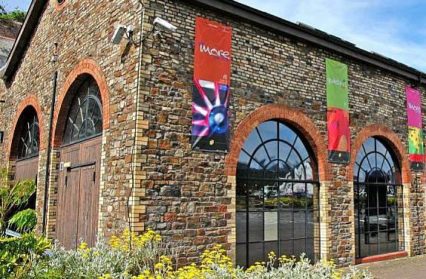Rachel Carney reflects on her own creative process during a search for inspiration at the Cynon Valley Museum.
My poems can often take months, sometimes years, to be crafted to a point where they’re ready to go out into the world. One particular poem took over a decade. So there’s something rather thrilling, but also quite terrifying, about drafting, editing and publishing a set of brand new poems in the space of just a few weeks. That’s not how all poetry residencies work, but that’s what I planned to do for my virtual poet-in-residence project with the Cynon Valley Museum.
This project was an opportunity to support a small, local museum that relies heavily on the work of its volunteers, struggling with the sudden drop in income generation caused by lockdown. As a funded PhD student, I’m one of the lucky ones right now. Though my research plans will need to be adjusted (and continually re-adjusted) over the next few months, I do have a regular income, while many others have been forced to stand by and watch their livelihoods collapse around them. It’s not just individuals, but whole communities that will suffer if local museums and arts venues do not get the support they need to recover from this ordeal.
Cynon Valley Museum staff and volunteers have been working hard during the lockdown, creating more content for the website: a series of blog posts revealing the stories behind objects in their collection and a programme of online art exhibitions showcasing the work of local artists. I have always been interested in using visual prompts as inspiration for my writing, and this concept lies at the heart of my PhD research as I investigate the use of ekphrasis (writing poetry in response to visual art) in museums. I was eager to put some of my research into practice, taking the opportunity to stretch myself as a poet, to test out some new ideas and support a worthy cause at the same time.
Although I was keen to embark on this project, I was also aware of the fact that I live in Cardiff (a forty-minute drive away from the Cynon Valley) and grew up in the North of England, so my understanding of the Cynon Valley and its communities will always be, to some extent, from the perspective of an outsider. I was determined to be open about this, to use this project as a way to celebrate the work of local artists, and to inspire others.That’s the reason why I decided to run an online creative writing workshop at the end of the project, to shift the focus away from my own poetry and encourage others to take up the creative baton.
I also wanted to make the project interesting, even for people who may not be in the habit of reading poetry, so alongside each poem I decided to include a short reflection on my writing process, revealing the jumble of ideas and thoughts that often come together into something quite unexpected. This has also helped me to reflect critically on my writing, to interrogate what actually goes on between mind, page and screen, as I begin to understand how one idea leads to another. A perfect illustration of this is the final poem, ‘Crow’, which responds to Karin Mear’s painting ‘Mother and Child Flight’.
Crow
I follow my crow up the road
hopping aside to let the people passwait! wait for me! she flits
away turns back flies off againslips upward into sky twisting her
wings to the wind relishing therush of air on feathers air on
slender opportunity on skinalways a gap between us
Below are my accompanying reflections on the writing process.
“This poem took some time to germinate, beginning with just a few words jotted down in my notebook, inspired by Karin’s title: mother, child, follow her, follow her, keep on following. But I didn’t know where to go from there until I looked out of the window, where I could see families making their way up the road outside, with their prams, scooters and bikes. Then the first line ‘I follow my crow up the road’ came to me and I wrote out a kind of narrative, imagining myself as a young crow trying to keep up with its mother, but I wasn’t quite sure where I was going with it. During the process of typing up the first draft it occurred to me that the crow was a metaphor for freedom, and the poem transformed into a metaphorical flight of imagined escape during the lockdown.“
Looking back at this now, I’m fascinated by the simple fact that a change of location (from the kitchen to the lounge) transformed a list of random words into the beginning of a first draft, and I’ll certainly be employing this technique in future. I also found that the reflective notes, which I tried to write concurrently alongside the poem itself, sometimes became beneficial in themselves, enabling me to step back from the poem and see it from a more critical perspective and edit it accordingly.
Visit the Cynon Valley Museum website to see the other poems.












